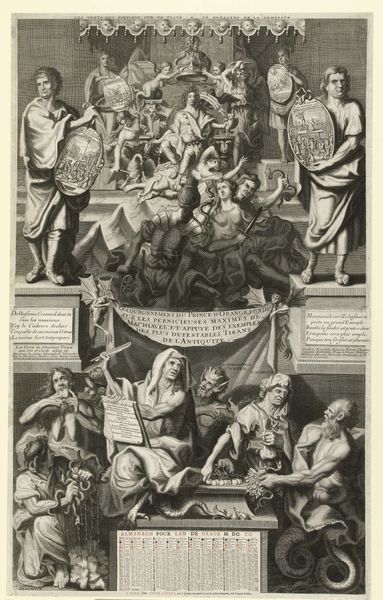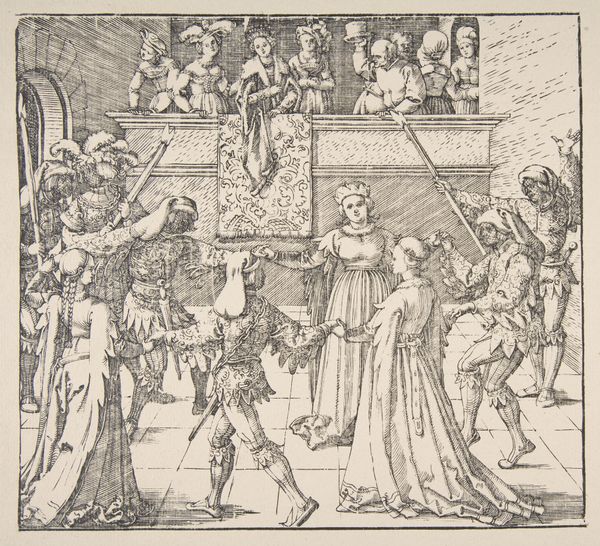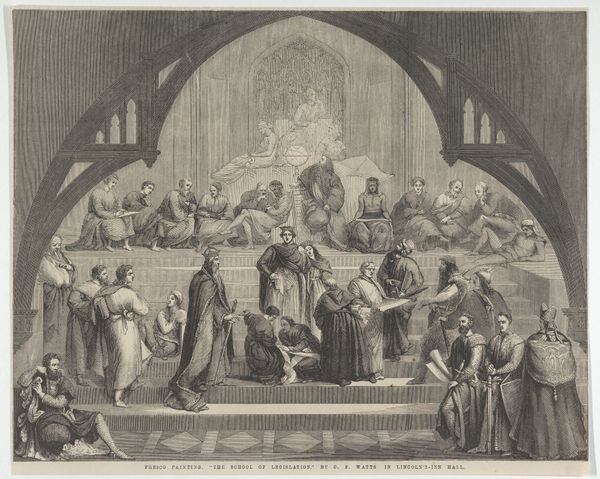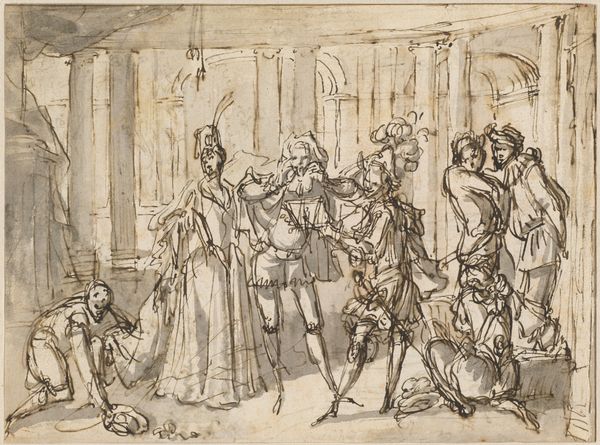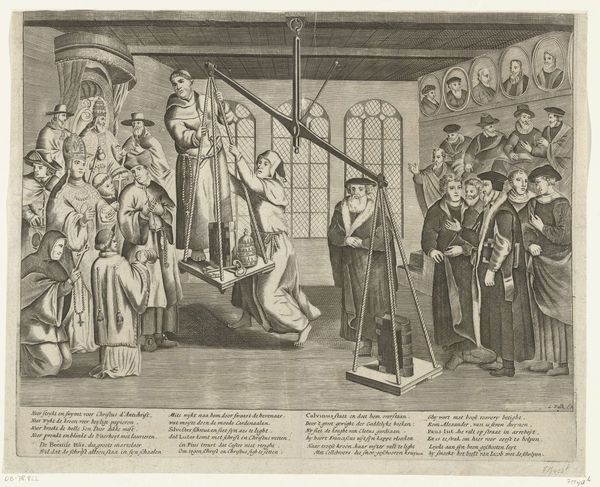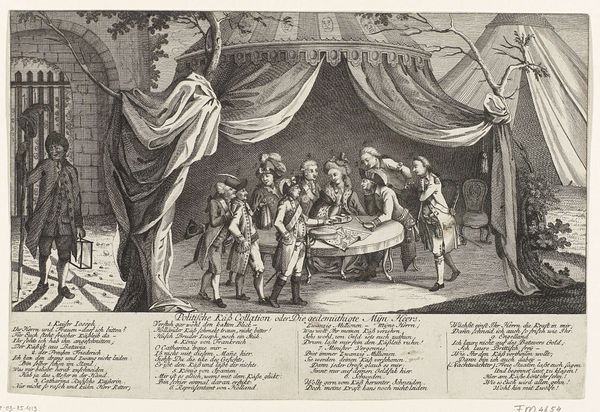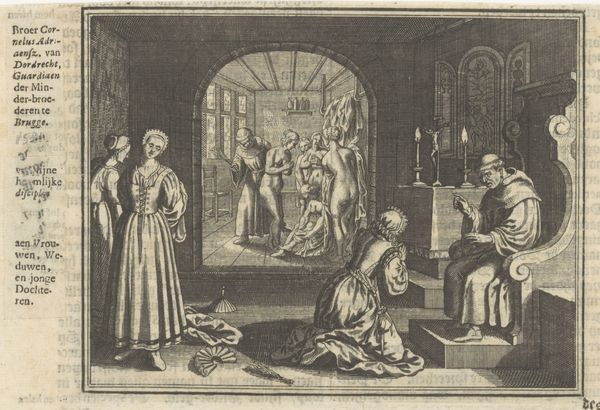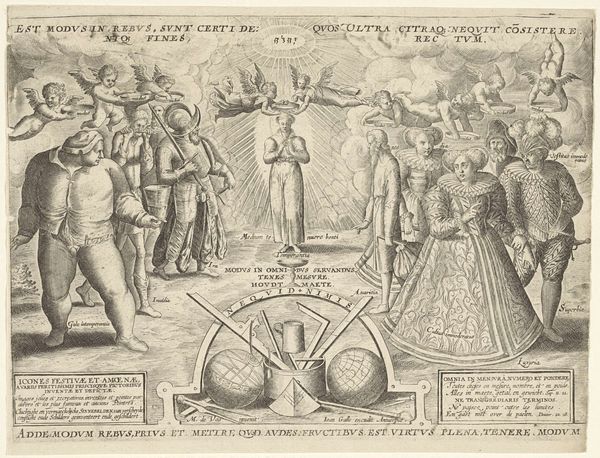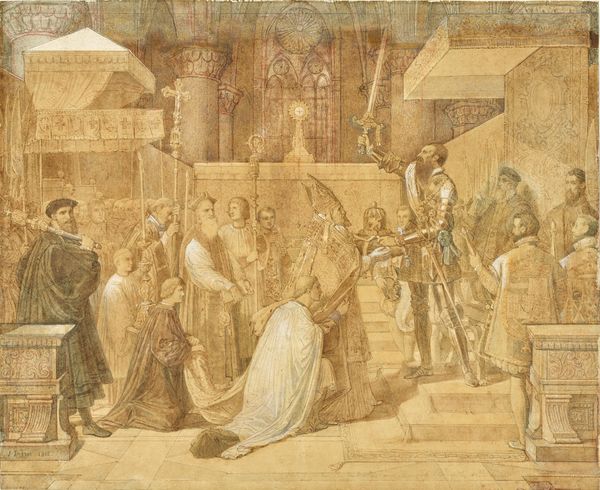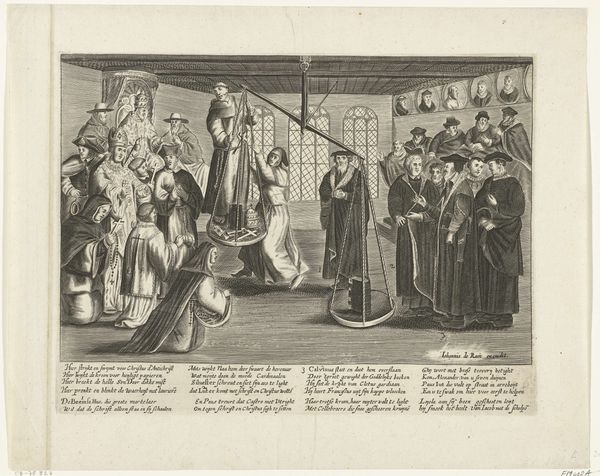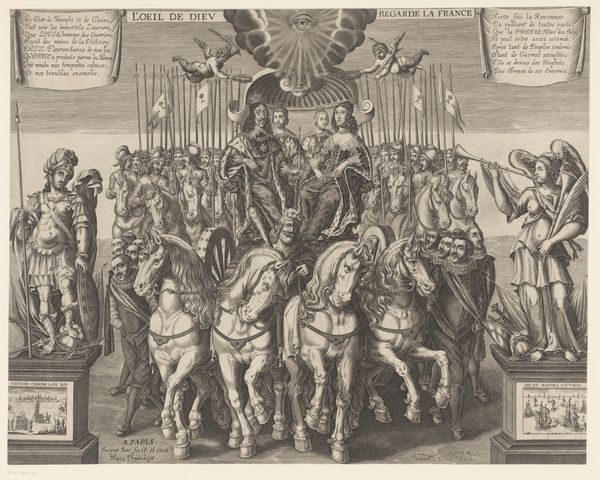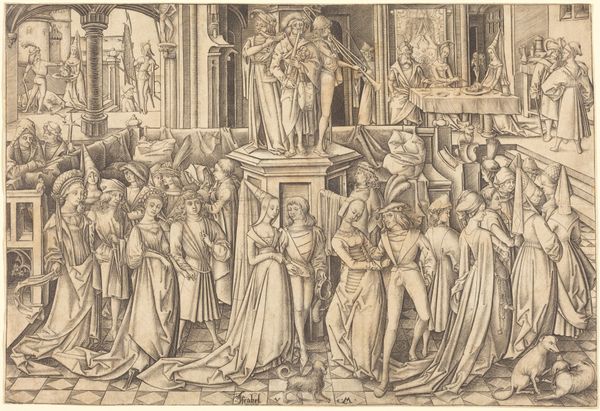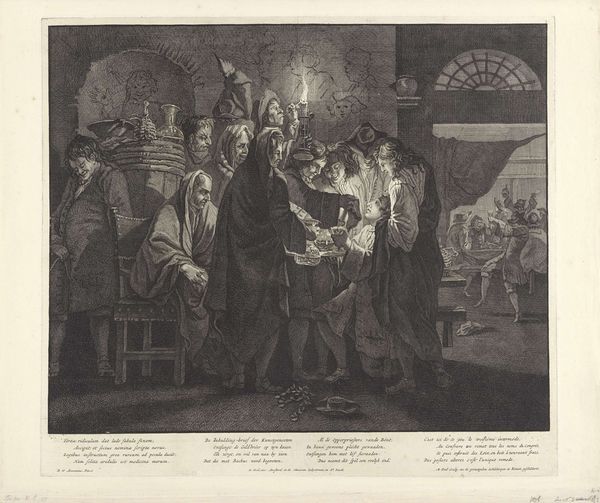
Vow of the Pheasant (Philip the Good and Isabella at the Feast of the Pheasant in Lille in 1454) c. 16th century
0:00
0:00
anonymous
Rijksmuseum
painting, oil-paint
#
portrait
#
medieval
#
painting
#
oil-paint
#
painted
#
figuration
#
oil painting
#
history-painting
#
miniature
Dimensions: height 39.5 cm, width 85.6 cm, thickness 3.8 cm, depth 7.3 cm
Copyright: Rijks Museum: Open Domain
Editor: This is "Vow of the Pheasant (Philip the Good and Isabella at the Feast of the Pheasant in Lille in 1454)", an oil painting from around the 16th century currently held at the Rijksmuseum. I'm really struck by the amount of detail and the stiff formality of the figures. What draws your eye in this piece? Curator: What's fascinating here is considering this image as a record of material culture and social performance. Look closely at the clothing: the textiles, the tailoring. These aren't just depictions; they are signifiers of status painstakingly created through specialized labor. How does examining the physical process of creating and wearing these garments reshape your understanding of power in this court? Editor: That's interesting; I was just thinking about how detached the figures appear. They seem posed, almost like mannequins displaying the fashion of the time. Curator: Precisely! Now, think about the pigment used to create this image. Where would these specific colors have come from? How would they be sourced and prepared? It is crucial to unpack how these things speak to global trade routes and artistic production methods in the late Medieval or Early Renaissance period. Editor: So, even the materials used in the paint itself have a story to tell about the world at that time? Curator: Absolutely. And beyond pigments, consider the panel itself. What kind of wood is it? Where did it come from? How was it prepared? Each decision, each material component, reveals a complex web of resources, labor, and social context. By focusing on the physical reality of the object, we gain a richer appreciation for the historical forces at play. Editor: I never thought about a painting revealing so much about its own creation. It’s made me look at it with a whole new level of interest. Curator: Indeed, the 'Vow of the Pheasant' becomes less a window into a historical event, and more a tapestry woven from the threads of material existence.
Comments
No comments
Be the first to comment and join the conversation on the ultimate creative platform.
